Great form of Gurukuliya education
On
Sadhvi Devpriya Chancellor and Head of Faculty, Patanjali University, Haridwar, Uttarakhand, India
11. Does the Gurukuliya education system have any relation with the new education policy?
Interrelationship between new education policy and ancient Gurukuliya education system - The ancient Gurukuliya education system was very noble, useful for life, self-welfare, world-welfare, full of knowledge-science of the subtle and gross world. The education policy which has been discussed by modern educationists and which is the goal of the new education policy at present. As there should be holistic education, education should be curiosity-centered, there should be continuous evaluation of the student. Education should be based on the roots of culture, experience should be accessible education, action based education should be there. The course should be according to the capability of the student etc. The proofs of this are adequately found in our Vedas, Smritis, Upanishads, Darshana and books like Ramayana, Mahabharata etc. Which was imbibed by the sages in the Guru-Shishya Gyan Parampara of ancient times. Gurukuliya knowledge, especially the education described in the Upanishads, was imbued with Guru-disciple dialogue, curiosity, practical, experiential and cultural values. Which we can understand by self-study of Kenopanishad, Kathopanishad, Prashnopanishad, Taittiriyaopanishad, Chhandagyopanishad etc. After the last almost 200 years, we are happy that some points in the current new education policy exactly match the Gurukuliya education system. For example, we will do a point-wise comparative study of both the education policies here.
1. Growth of physical, vital, mental, intellectual and spiritual forces.
(Education that fully develops the five cells or dimensions)
As we have discussed the internal development of the child through the development of Panchkosh Annamaykosh, Pranamayakosh, Manomayakosh, Vigyanmaykosh and Anandmaykosh in the Gurukuliya education system, exactly the same discussion is being discussed in the present education policy. Educationists of the present age have emphasized on developing these 5 powers physical, vital, mental, intellectual and He has discussed education policy in his texts.
Om agniye samidhamaharsa brhate jatavedase. Yatha Tvamagne Samidha Samidhyasaaaevamaharmayusha Medhaya Varchasa Prajaya Pashumibrahmavarchsena Sannidhe Jeevaputro Mamacharyo Medhavyahamasanyanirakarishnuryashasvi Tejasvi Brahmavarchasyannado Bhooyasa Swaha. [31]
That is, O Agnideva/Acharyadeva Acharyapravara in the form of Brahat. Just as you are offering sacrificial fires in this fire and keeping this fire alive (lit), so I am also by age, that is, by life, by medhaya-intelligence, by varchasa = special knowledge, by prajaya pashubhi = by the senses and by brahmavarchasena bliss May I be forever illuminated with joy. May my teacher always remain a living son. I am illustrious, brilliant, joyful and be the one who uses the world with sacrifice.
2. Student centric or Teacher centric education?
(Education Student Centered or Teacher Centered?)
There is a discussion all over the world today on this point whether education should be student centric or teacher centric? Some people believe that education should be student-centered and some people believe that education should be teacher-centered, but the Gurukuliya education system does not accept only the separate existence of both the teacher and disciple, but It talks about development of both. Just as the existence of the fetus and the mother are not separate, similarly the existence of the Guru and the disciple also develops simultaneously.
Om Saha navavatu saha nau bhunaktu saha viryam karvavahai. Tejasvi Navadhtimastu Ma Vidwishavahai ll [32]
Acharya Upanayamano Brahmacharinam Krinute Garbhamantah l
Tam Ratristidda Udare Bibharti Tam Jatam Drashtumbhisanyanti Devah ll [33]
Sah Nau Yashah Saha Nau Brahmavarchasama ll [34]
Means- O Lord! May the fame of both of us guru-disciples spread in the world through the best education of Vedas and knowledge-science etc. May both of us study and teach brilliantly.
3. Curiosity based education
Modern educationists believe that education should be curiosity based. It should not happen that we go on giving very high sermons and the student does not understand anything. At the time of examination, if he passes something by rote, in fact he will enjoy studying when he himself will do some curiosity. The scientificity of this thing was known thousands of years ago by our sages, that's why the first mantra of Atharvaveda's Brahmacharya Sukta begins with the word Ikshan which means-curiosity.
Brahmacharishnamshcharita Rodasi Ubhe Tasmindevah Sammanaso Bhavanti [35]
(Atharva Veda 11.5.1)
The celibate wanders searching for that Brahman in every substance of both the people. With this simple inquisitive mind of his, divine powers get in touch.
Similarly, the inquisitive teaching dialogue between the teacher and the disciple is very famous in the Keno Upanishad, Katho Upanishad, Prasno Upanishad, Taitiriya Upanishad, Chhandagyo Upanishad and Swetasvataro Upanishad.
Keneshitam Patati Preshitam Manah Kena Pranah Prathamah Preti Yuktah I Keneshitam Vachamimam Vadanti, Chakshuh Shrotam Ka U Devo Yunakti [36]
They say these words, and who is the god who unites the eyes and the ears? [36] In the ancient teaching tradition, the disciple would freely ask the teacher whatever questions came to his mind and the teacher would answer them. until he is completely satisfied. In the Kathopanishad narrated by the inquisitive disciple Nachiketa and the brahmanical sage-
Vakta Chasya Tvadriganyo Na Labhyo [37]
Sa Tva Priyana Priya Roopamshcha Kamanabhidhyayannachiketoatyastrakshih I [38]
In the entire Kathopanishad, Yamacharya satisfies the curiosity of the disciple Nachiketa satisfied him by keeping him in the center. Similarly, the teacher-disciple interactive curiosity learning is of utmost importance.
In Maharishi Dayanand ji's biography, there is also an interesting episode of Guru-disciple dialogue, in which Maharishi Dayanand ji has asked many questions to his Guru Virjanand ji, to which Dandi Swami ji has answered - sometimes there is a debate between Guru-disciple. used to go. Virjanand was a great logician, but Dayanand was also not an ordinary eloquent. Guruji used to give him the titles of 'Kaljivi' and 'Kulkar' several times.
The Prasno Upanishad contains a very interesting instance of a guru-disciple dialogue in which these six Brahma inquisitors come to Maharishi Pippalad:
Om Sukesha and Bharadwaja, Shaivya and Satyakama, Sauryayani and Gargya, Kaushalya and Ashvalayana, Bhargava and Vaidarbhi Kabandhi
These Katyāyanas, who are devoted to the Absolute Truth and who are devoted to the Supreme Absolute Truth, are seeking the Supreme Absolute Truth. [39]
4. Mapping of knowledge status of the student.
(Teaching according to student's ability)
The very important point of modern education is that education should be given according to the ability of the student. Read as much as you can. [40]
That is, teach according to the power of the celibate.
Dharmartho Yatra Na Syatam Shushrusha Vaapi Tadwidh l
Vidya Sah Martavyam N Chainamooshare Vapet ll [41]
That is, the teacher should impart knowledge only to the worthy, well-deserving disciple. Do not teach an unworthy, unworthy disciple. Because it does not lead to religion or meaning. If not, take the vow of death. But do not impart knowledge to an unworthy disciple. For the knowledge thus given to an unworthy person is no less than sowing seeds in a barren field. O Lord, please teach me this intelligence, O Varuna, who is skilled in the sacrifice.
Imam Dhiyam Shikshmanasya Dev Kratum Daksham Varuna Sam Shishadhi I
Yayati Vishwa Durita Tarm Suvarmonamadhi Navam Ruhema II . [42]
It has been prayed in this mantra that O Acharya who constantly prays! You make the intellect, work power and dexterity of this student group complete and disciplined. So that we can cross the bad qualities and sorrows of ignorance etc. by climbing on the boat of knowledge and discipline.
Akshanvantah Karnavantah Sakhayo Manojaveshvasama Babhoovuh I
Aadadhnasa Upakakshasa U Tve Hrida Eva Stratva U Tve Dadrishre II [43]
In addition, the Vedas refer to the Acharya as Samyami, Vachaspati (master of speech), Vasupati (knower of virtues), Bhutakrit (character builder), Jnananidhi (good grasp of subjects), Manurbhava (contemplative and thinker), Vaktatvavit (language). scientist), visionary and cheerful etc. are also expected to be endowed with qualities.
Therefore, before teaching, it is necessary for the teacher to study the student's tendencies, his mental inclination, his nature and abilities, his background and his paternal and genetic effects with great precision and a positive attitude and enter them in the subjects. Try to make it doable. Along with this brilliance in Acharyas, selfless commitment towards their responsibilities and then it is also considered necessary to self-evaluate it by the provenance and result of efficiently projecting it in the disciples. In the Taittiriya Upanishad, giving a subtle depiction of the teacher- disciple relationship, the latter form ( follower) is said, knowledge is the conjunction that connects the two and discourse is the connector of these:
Acharyah purvarupam antevasyuttararupam I Vidya Sandhi I Pravachanam Sambandhanam I Ityadhi Vidyam I [44]
At the same time, the disciples are expected to acquire the knowledge existing within the Guru through their service and care in the same way that a man digs the ground with a digger or shovel and extracts water, as a man digs with a digger or a shovel .
Khanana Khanitrena Naro Varyadhigachchhati I Yatha Gurugattam Vidyam Shushrushuradhigachchhati [45]
Thus, the students should take the knowledge obtained by the grace of the teacher through study (adhiti), anushilana (bodh), practical application (acharana) and try to communicate it properly in the world so that their The public community can also benefit from the knowledge acquired by the
5. Inclusive education
(All-inclusive education)
The new education policy emphasizes that education is equally essential for human beings, that is, all the four varnas and men and women are equally entitled to education. Rishis like Raikva, Satyakam, Jambal, Mahidas and Vyas etc. do not belong to higher varnas, similarly the dialogue between Gargi and Yajnavalkya in Chhandogyopanishad is a strong proof of women's education. It is said in Atharvveda -
Brahmacharyayena Kanya Yuvanam Vindate Patim. [46]
That is, on completion of her brahmacharya ashram i.e. on completion of education, the girl should get her young husband. It is known from this that in ancient times the right to education was equally available to all human beings.
Panchavinshe Tato Varshe Pumannari Tu Shodashe I Samatvagataveeryo Tau Janiyata Kushalo BHishak II. [47]
Here a woman is said to be more powerful and intelligent than a man because the powers that a man accumulates in 25 years, a woman gets accomplished in just 16 years.
Yathemam Vachaghudulyanimavadani Janebhyah I Brahma Rajanyabhyam Shudraya Charyaya Cha Svaya Charnaya Cha [48]
6. Holistic education, ultimate goal of education
(holism in education)
Modern educationists believe that education should not be fragmented but should be holistic. Although each section or subject is also complete in itself, it is always integral to the totality. Narada-Sanatkumar dialogue in Chhandogyopanishad in 26 sections this thing has been presented in a very beautiful way, starting from Shabdavit, the completeness of Atmavit or Brahmavittak education has been shown, in the same way Aruni Uddalak to his son Svetaketu from 1st to 16th section of Chandogyopanishad's Shashta Prapathak Preach this totality of education. Our sages believed that there should not be any deficiency in the life of an educated person. For example, in the Vedarambh Sanskar of Sanskarvidhi, the Guru says-
He Balaka ! Twamishwaramakripya Vidwan Shariratmabalayuktah Kushali Viryavan Arogah Sarva Vidya Adhityaasmana Didrikshuh Sannagamyah II [49]
7. Observation & Project based education
(Observation and Project Based Learning)
Modern educationists believe that the child's education should be based on observation and project intelligence. By completing small projects efficiently from childhood, a person can complete the big project of whole life with great joy.
In ancient times, we get to see this thing in Chhandogyopa-nishad. Satyakam Jabal is sent to the forest by his Guruji with a project and says that when these 400 cows become 1000 then return to Gurukul only then we will educate you. To complete this project, Satyakam Jabal returns to the Guru after observing from the earth, from the winds, from the directions, from the sun, from the cows and from the entire nature, having attained Brahmagyan.
Tamupaniya Krishanamabalanam Chatuhshata Ga Nirakrityovachemah Somyanusanvrajeti l
Ta Abhiprasyapayannuvacha Nasahastramavartayeti l Sa Ha Varshaganam Provasa I Ta Yada Sahastrai Sampeduh ll [50]
It was an experimental test form for devotion to Guru, curiosity for learning. Till 400 cows became a thousand, then after many years he brought them to the ashram. Till then, Satyakam Jabal had received very secret knowledge from different components of nature and company of best scholars.
Brahmavidiva Vai Somya Bhasi, Ko Nu Tvaanushashasetyanye Manushyebhya Iti Ha Pratijagye, Bhagwaistatveva Me Kamam Bruyat l [51] (Chhand.4.9.2)
Seeing Satyakam, the Guru said, O gentleman! You seem to me as if you have become a Brahman. Who has taught you the Brahman? Satyakam says: O Guruvar! I have been taught something by various components of nature such as special bull, fire etc. different from ordinary human beings, yet Lord I am your disciple please fulfill my desire i.e. please instruct me.
- To continue ….
Tags: patanjali patanjali wellness yog sandesh education india bharat university of patanjali bharat swabhiman patanjali yog samiti swami ramdev ji maharaj patanjali gurukulam acharyakulam patanjali research institute Acharya balkrishna patanjali yogpeeth patanjali yog sandfdesh yog gram yog guru haridwar devbhumi mahila patanjali yog samiti patanjali ayurvedic hospital
लेखक
Related Posts
Latest News
01 Oct 2024 17:59:47
ओ३म 1. सनातन की शक्ति - वेद धर्म, ऋषिधर्म, योग धर्म या यूं कहें कि सनातन धर्म के शाश्वत, वैज्ञानिक,...



.jpg)
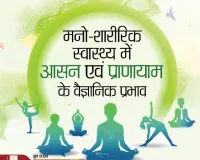



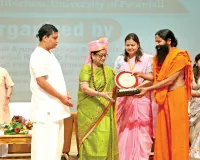
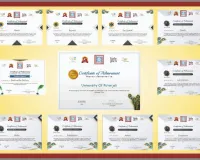




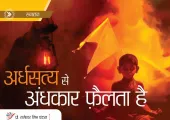


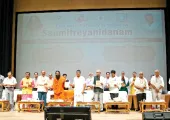

.jpg)
.jpg)
